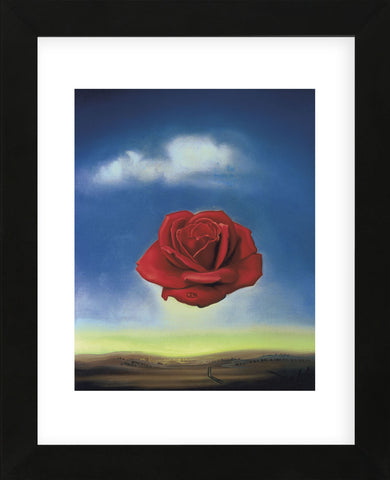Product Detail
- Overall: 16" H x 13" W x 0.75" D
- Overall Product Weight: 2.5lb.
- Material: Glass
- High-quality print on heavy paper
- Printed with vibrant, color-fast inks
- Framed in a contemporary style molding; available in black, gold, and white
- Sawtooth hanger
- Unmatted
© Salvador Dalí, Fundació Gala-Salvador Dalí / Artists Rights Society (ARS), New York, 2017
Product Detail
- Overall: 16" H x 13" W x 0.75" D
- Overall Product Weight: 2.5lb.
- Material: Glass
- High quality print on heavy paper
- Printed with vibrant, color-fast inks
- Framed in a contemporary style molding; available in black, white, and gold
- Sawtooth hanger
- Unmatted
About the Artist
Dali transformed the definition of Surrealism, expressing the unconscious process of thought, dream and associated realities through his paintings and drawings. An eccentric and masterful Surrealist in painting and in life, Dali wrote in his diary two years before entering art school in Madrid during the early 1920s: "Perhaps I’ll be despised and misunderstood, . . . but I’ll be a great genius."
Throughout his life, Dali cultivated eccentricity and a predisposition towards narcissistic exhibitionism, claiming that his creative energies were derived from it. The spectrum of imagery from fantastic to nightmarish visions which Dali produced are the supreme evidence of these idiosyncrasies.
Born in Figueras, Spain, Dali first studied at the École des Beaux Arts in Madrid and was influenced by metaphysical painters de Chirico and Carrà while there. Equally admiring the meticulous realism of the Pre-Raphaelites and French 19th century painters, he began to blend conceptual styles and techniques. Beginning in 1927, Dali exhibited in Madrid and Barcelona, earning a reputation for being one of the most promising younger painters. A visit to Paris in 1928 brought him into contact with Picasso and the Surrealists: Miró, Masson, Ernst, Tanguy and André Breton. Shortly thereafter he became a leading figure of the Surrealist movement. In 1941 he had his first retrospective at The Museum of Modern Art, New York. Today you can find his work in museums around the world, as his works remain extremely popular.





